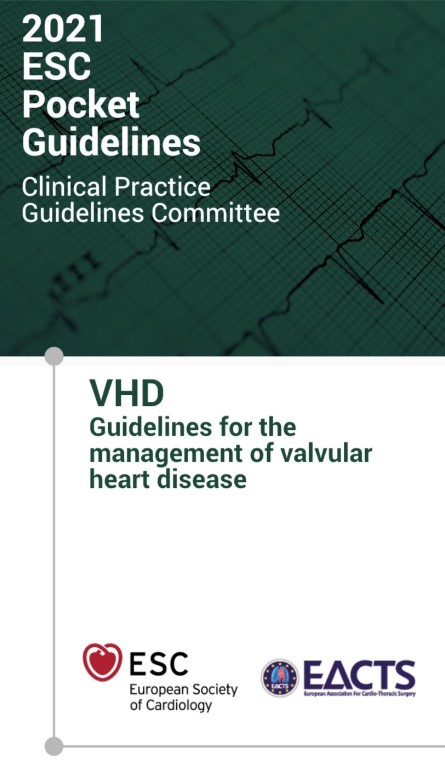ESC/EACTS VHD Guideline
2021 Updates
ESC/EACTS VHD Guideline
2021 Updates
2021 ESC/EACTS Guidelines emphasize that patient values and preferences should be a part of the decision-making process and recommend TF-TAVI as the presferred mode of intervention* in patients† aged 75 and older with symptomatic severe aortic stenosis (AS)1
Download the 2021 ESC/EACTS BrochureThe European Society of Cardiology (ESC) and the European Association for Cardio-Thoracic Surgery (EACTS) Valvular Heart Diseases (VHD) Guidelines with treatment recommendations for symptomatic severe AS were updated in 2021 following consideration of noteworthy clinical trial data, including those from PARTNER 3 Trials.1
*Based on evaluation of clinical, anatomical and procedural factors.
† With a treatment indication.
The updated 2021 ESC/EACTS VHD Guidelines allow more patients to benefit from TAVI1

Recommendations for AS therapy are based on patient values and preferences, and emphasize the importance of patients making an informed treatment choice

The Guidelines recommend TF-TAVI as the preferred mode of intervention* in symptomatic severe AS patients† aged 75 and older and for various patient groups under the age of 75

The Heart Team should consider individual patient characteristics when evaluating the treatment options and discuss their recommendations with the patient
Early diagnosis and timely referral to a Heart Team is essential to direct patients toward their best treatment option1

Treatment decisions should be made by an active and collaborative Heart Team with expertise in VHD, leveraging other specialists in consultative and supportive roles as necessary.
TAVI is the preferred approach for severe AS patients aged 75 and older
ESC/EACTS VHD 2021 Guidelines: Recommendations for treatment1

For symptomatic patients with severe AS.
Accumulating clinical evidence about the VHD management and treatment options was reflected in the 2021 ESC/EASC VHD Guidelines1
The recommendations for interventions in patients with AS have changed.

The PARTNER Trials showed excellent results, and additional studies also support the short- and long-term benefits* of TAVI for patients

Shorter procedure times2,3

Shorter hospital stays4,5

Faster recovery6

Better Quality of Life (QoL)7

Low complication rate8
*When compared to SAVR.

References: 1. Vahanian A, Beyersdorf F, Praz F, et al. 2021 ESC/EACTS Guidelines for the management of valvular heart disease. Eur Heart J. 2022:43(7):561-632. DOI: 10.1093/eurheartj/ehab395 2. Data on file at Edwards. 3. Hamm CW, et al. The German Aortic Valve Registry (GARY): in-hospital outcome. Eur Heart J. 2014;35:1588–98. 4. Leon MB, et al. Transcatheter or surgical aortic-valve replacement in intermediate-risk patients. N Engl J Med. 2016;374:1609–1620. 5. Thourani VH, et al. Transcatheter aortic valve replacement versus surgical valve replacement in intermediate-risk patients: A propensity score analysis. Lancet. 2016; 387:2218–25. 6. Kleczyński P, et al. Short- and intermediate-term improvement of patient quality of life after transcatheter aortic valve implantation: A single-centre study. Kardiol Pol. 2014;72:612–6. 7. Reynolds MR, et al. Health-related quality of life after transcatheter or surgical aortic valve replacement in high-risk patients with severe aortic stenosis. J Am Coll Cardiol. 2012;60:548–58. 8. Tamburino C, et al. Comparison of complications and outcomes to one year of transcatheter aortic valve implantation versus surgical aortic valve replacement in patients with severe aortic stenosis. Am J Cardiol. 2012;109:1487–93.